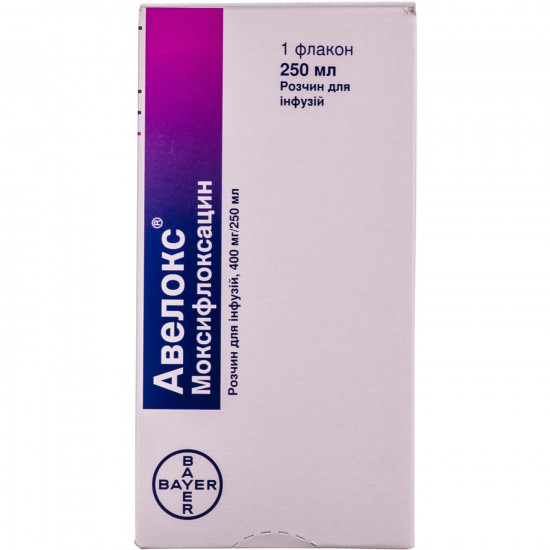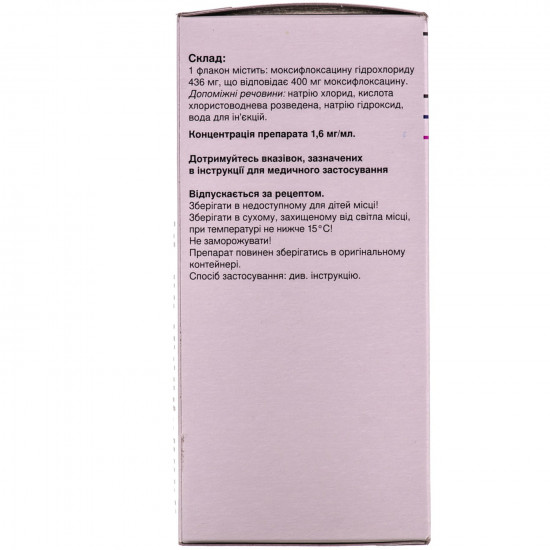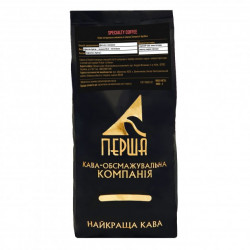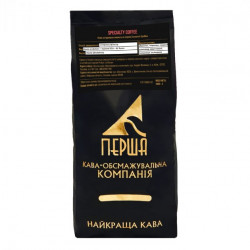



- Stock: In Stock
- Model: 176391
0% Customers recommend this product
-
5 Awesome0%
-
4 Great0%
-
3 Average0%
-
2 Bad0%
-
1 Poor0%
Reviews Over Aveloks solution for inf. 400mg/250ml fl. 250 ml No. 1
- (0)
Total Reviews (0)
click here write review to add review for this product.
Report this review.
Description
Structure and form of release
Structure
Active ingredient: moxifloxacin;
1 bottle (250 ml) supports a moksifloksatsin of a hydrochloride of 436 mg that corresponds to 400 mg of a moksifloksatsin;
Excipients: sodium chloride, the hydrochloric acid divorced sodium hydroxide, water for injections.
a release Form
Solution for infusions.
Pharmacological properties
Moxifloxacin (1-cyclopropyl-7 { (s, s)-2.8-diaza-bitsiklo [4.3.0] non-8-uye }-6-fluorine-8-metoksi-1.4-dihydro-4-oxo-3-quinoline carboxylic acid a hydrochloride) — antibacterial medicine of a ftorkhinolonovy number of a broad spectrum of activity. bactericidal effect of medicine is caused by inhibition of bacterial ii and iv topoisomerases which leads to disturbance of biosynthesis of DNA of a microbic cell and its death. the activity of a moksifloksatsin depends on its concentration in blood plasma: the minimum bactericidal concentration correspond to the minimum bacteriostatic. mechanisms of firmness of the microorganisms inactivating penicillin, cephalosporins, aminoglycosides, macroleads and tetracyclines do not affect antibacterial efficiency of a moksifloksatsin. the cross resistance between medicine aveloks and the listed antibiotics is not noted. also cases of plasmid resistance are noted. general frequency of development of resistance very insignificant (10-7–10-10). the resistance to a moksifloksatsin develops slowly by numerous mutations.
Repeated action of a moksifloksatsin on microorganisms in concentration is lower minimum than inhibiting (MIK) is followed only by slight increase of MIK. Between antibacterial agents of group of hinolon, as a rule, note cross resistance. However some gram-positive and anaerobic microorganisms resistant to other hinolona are sensitive to a moksifloksatsin. In vitro moxifloxacin is active concerning a wide range of gram-negative and gram-positive microorganisms, anaerobe bacterias, acid resisting bacteria and such atypical forms as Micoplasma, Chlamydia, Legionella. Moxifloxacin is effective concerning the bacteria resistant to β-laktamny and makrolidny antibiotics.
are sensitiveTo drug:
gram-positive microorganisms — Staphylococcus aureus (including strains, sensitive to Methicillinum), Streptococcus pneumoniae (including the strains resistant to penicillin and macroleads), Streptococcus pyogenes (group A);
gram-negative microorganisms — Haemophillus influenzae (including the strains producing β-lactamelements), Haemophillus parainfluenzae, Klebsiella pneumoniae, Moraxella catarrhalis (including the strains producing β-lactamelements), Escherichia coli, Enterobacter cloacae;
atypical forms — Chlamydia pneumoniae, Mycoplasma pneumoniae, Legionella pneumoniae.
are rather sensitiveTo a moksifloksatsin:
gram-positive microorganisms — Streptococcus milleri, Str. mitior, Str. agalactiae, Str. dysgalactiae, Staphylococcus cohnii, S. epidermidis (including metitsillinrezistentny strains), S. haemolyticus, S. hominis, S. saprophyticus, S. simulans, Corynebacterium diphtheriae;
gram-negative microorganisms — Bordetella pertussis, Klebsiella oxytoca, Enterobacter aerogenes, Enterobacter agglomerans, Enterobacter intermedius, Enterobacter sakazaki, Proteus mirabilis, Proteus vulgaris, Morganella morganii, Providencia rettgeri, Providencia stuartii;
anaerobe bacterias — Bacteroides distasonis, Bacteroides eggerthii, Bacteroides fragilis, Bacteroides ovatus, Bacteroides thetaiotaomicron, Bacteroides uniformis, Fusobacterium spp., Porphyromonas spp., Porphyromonas anaerobius, Porphyromonas asaccharolyticus, Porphyromonas magnus, Prevotella spp., Propionibacterium spp., Clostridium perfringens, Clostridium ramosum;
atypical forms — Legionella pneumophila, Caxiella burnettii.
Sensitivity to a moksifloksatsin is confirmed towith clinical data.
Moxifloxacin is less activeconcerning Pseudomonas aeruginosa, Pseudomonas fluorescens, Burkholderia cepacia, Stenotrophomonas maltophilia.
moxifloxacin is soaked up byAt oral administration quickly and almost completely. The absolute bioavailability reaches nearly 91%.
In the range of doses from 50 to 1200 mg at single application and in a dose of 600 mg/days during 10 days pharmacokinetics linear. Stable concentration in blood is reached after 3 days of application. After single dose of 400 mg of medicine the maximum concentration in blood plasma is reached during 0.5-4 h and makes 3.1 mg/l. At reception of a moksifloksatsin along with food note insignificant increase in time of achievement of the maximum concentration (on 2 h) and insignificant decrease in the maximum concentration (approximately for 16%), at the same time duration of absorption does not change. However these data have no clinical value and the medicament can be taken irrespective of meal.
Moxifloxacin is quickly distributed byin fabrics and bodies, contacts proteins of blood plasma (generally with albumine) approximately for 45%. The volume of distribution is about 2 l/kg of body weight. The high concentrations of medicine exceeding concentration in blood plasma are reached in pulmonary fabric (alveolar macrophages), a mucous membrane of bronchial tubes, nasal adnexal bosoms and especially in the inflammation centers. In interstitial liquid and saliva moxifloxacin is defined in the free, not connected with proteins state, in higher concentration, than in blood plasma.
Moxifloxacin is not exposed to biotransformation the microsomal system of P450 cytochrome in a liver and is emitted from an organism with kidneys both in not changed look, and in the form of inactive sulpho compounds and glucuronides. 45% of not changed medicine are removed with urine and a stake. Elimination half-life of medicine makes about 12 h. The average general clearance after reception in a dose of 400 mg is 179–246 ml/min. About 19% of a single dose are removed in not changed view with urine and 25% — with a stake.
todid not establish age (at children did not study) also sexual differences in pharmacokinetics of a moksifloksatsin. Significant changes of pharmacokinetics of a moksifloksatsin at patients with a renal failure (clearance of creatinine of 30 ml/min · 1.73 m 2 ) and at being on a continuous hemodialysis and long out-patient peritoneal dialysis are not revealed. At patients with insignificant and moderate abnormal liver functions (a stage And yes In on classification of Chayld-Pyyu) the pharmacokinetics of medicine does not change. Data on application in cases of heavy abnormal liver functions (a stage With on Chayld-Pyyu) are absent.
Indication
Treatment of the bacterial infections caused by microorganisms, sensitive to drug.
Infectious diseases of airways:
chronic bronchitis during aggravation;
not hospital pneumonia which causative agents are strains of microorganisms with multiple resistance to antibiotics;
sharp sinusitis;
Uncomplicated infections of leather and soft tissues.
Uncomplicated inflammatory diseases of bodies of a small pelvis (including infectious diseases of an upper part of the sexual sphere at women, including a salpingitis and an endometritis).
Complicated infectious diseases of skin and hypodermic structures (including the infected diabetic foot).
Complicated intraabdominal infections, including polymicrobial infections (such as abscessing).
Streptococcus pneumonie with multiple resistance to antibiotics, including the strains resistant to penicillin and the strains resistant to two and more antibiotics of such groups as penicillin (at the minimum inhibiting activity of ≥2 mkg/ml), the second generation of cephalosporins (tsefuroksy), macroleads, tetracyclines and Trimethoprimum/sulfamethoxazole.
Use
Adult on 400 mg of 1 times a day at any infections.
therapy Duration
Duration of therapy is defined by weight of an infection and clinical effect. At the initial stages of treatment Aveloksa solution can be applied to infusions, and then for continuation of therapy in the presence of indications medicine can be appointed inside in tablets.
Exacerbation of chronic bronchitis — 5 days.
Not hospital pneumonia — 10 days.
Acute sinusitis — 7 days.
Uncomplicated infections of leather and soft tissues — 7 days.
Uncomplicated inflammatory diseases of bodies of a small pelvis — 14 days.
Complicated infections of skin and hypodermic structures — the general duration of step therapy moksifloksatsiny (in/in introduction of medicine with the subsequent oral administration) is 7–21 days.
Complicated intraabdominal infections — the general duration of step therapy (in/in introduction of medicine with the subsequent oral administration) is 5–14 days.
therapy duration tablets and solution for infusions of Aveloks wasaccording to clinical trials up to 21 days (at treatment of the complicated infections of skin and hypodermic structures).
At patients of advanced age and at patients with an abnormal liver function the mode of dosing does not change.
At patients with a renal failure (including at clearance of creatinine of 30 ml/min · sup do not have 1.73 m 2 ) and at being on a continuous hemodialysis and long out-patient peritoneal dialysis in dose adjustment need.
Use for treatment of patients of different ethnic groups — in change of the mode of dosing is not present need.
should take the Pill without chewing, washing down with enough water, irrespective of meal.
Infusional solution of a moksifloksatsin is applied both to antibacterial monotherapy, and in a combination with other compatible medicines. Solution of a moksifloksatsin keeps stability during 24 h at the room temperature and when using the following solvents: water for injections, solutions of sodium of chloride of 0.9%, sodium of chloride 1M, glucose of 5%, 10% and 40%, solution of xylitol of 20%, Ringer and Ringer's solution of a lactate, the medicines Aminofuzin of 10% and Ionosteril D5. Infusional solution should be entered in/in slowly within 60 min. The maximum dose makes 600 mg once or 400 mg of 1 times a day within 7–21 days. In/in appoint Aveloks in a dose of 400 mg of 1 times a day. Drug can be used in/in during all course of treatment or at the initial stages of treatment with the subsequent transition to reception of a moksifloksatsin in the form of tablets.
Contraindication
Hypersensitivity to a moksifloksatsin (or to any component of medicine); to other hinolona; children's and teenage age (up to 18 years); medicine is contraindicated to patients with epilepsy, during pregnancy and feeding by a breast.
Side effects
Shipping of a moksifloksatsin at most of patients good. during clinical trials of a moksifloksatsin the majority of side effects (90%) were easy or moderate severity. frequency of cancellation of treatment using infusional solution aveloks in connection with development of side effects did not exceed 3.8%.
With a frequency of development of 1%10%
from a cardiovascular system — lengthening of an interval of Q-T at patients with the accompanying hypopotassemia.
from a GIT — an abdominal pain, nausea, diarrhea, vomiting, dyspepsia symptoms, change of hepatic tests.
from central nervous system, sense bodys — dizziness, a headache.
With a frequency of development of ≥0.1%1%
General reactions — an adynamy, a hyperhidrosis, the general weakness, pain in a thorax.
from a cardiovascular system — tachycardia, increase in the ABP, heart consciousness, lengthening of an interval of Q-T.
from a GIT — dryness in a mouth, nausea, vomiting, a meteorism, a lock, stomatitis, lack of appetite, candidiasis of an oral cavity, a glossitis, increase gamma glutamiltranspeptidazy and amylases.
from the system of blood and lymphatic system — a leukopenia, decrease in level of a prothrombin, an eosinophilia, thrombocytopenia.
from a musculoskeletal system — arthralgia, myalgia.
from nervous system — insomnia, dizziness, nervousness, drowsiness, feeling of alarm, a tremor, paresthesias.
from a respiratory system — short wind.
from skin — rashes, an itch, perspiration.
from an urinogenital system — vaginal candidiasis, a vaginitis.
With a frequency of development of ≥0.01% ≤ 0.1%
General reactions — pain in the field of a basin, a face edema, a dorsodynia, changes of laboratory tests, allergic reactions, an onychalgia.
from a cardiovascular system — decrease in the ABP, a loss of consciousness, peripheral hypostases, a vazodilatation (rush of blood to the person).
from a GIT — gastritis, discoloration of language, a dysphagy, jaundice (cholestatic prevails), diarrhea (caused by Clostridium difficile).
from blood and lymphatic system — decrease in level of thromboplastin, increase in level of a prothrombin, thrombocytopenia, anemia.
from metabolism — a hyperglycemia, a lipidemia, a hyperuricemia, increase in LDG in combination with violation of hepatic tests.
from a musculoskeletal system — arthritis, injury of sinews.
from nervous system — hallucinations, depersonalization, increase in a muscle tone, an incoordination, agitation, amnesia, aphasia, emotional lability, a sleep disorder, speeches, process of thinking, decrease in tactile sensitivity, pathological dreams, spasms, confusion of consciousness, a depression.
from a respiratory system — a bronchospasm.
from skin — a rash (makulopapulezny, pustular, purple), a small tortoiseshell.
from sense bodys — sonitus, a disorder of vision, loss of flavoring feelings, a parosmiya (including change of feeling of smells, decrease and loss of a scent), an amblyopia.
from an urinogenital system — a renal failure (increase in level of creatinine or urea).
With a frequency of development of 0.01%
Allergic reactions — anaphylactic reactions, an acute anaphylaxis (including life-threatening), a Quincke's disease (including a laryngeal edema, life-threatening).
from a GIT — pseudomembranous colitis (in isolated cases life-threatening), hepatitis (mainly cholestatic).
from a musculoskeletal system — a rupture of sinews.
from skin — Stephens's syndrome — Johnson.
from nervous system — psychotic reactions.
from a cardiovascular system — a ventricular tachyarrhythmia (very seldom), fibrillation and trembling of ventricles and cardiac arrest mainly at the people inclined to arrhythmia.
from laboratory indicators — increase or reduction of size of a hematocrit and decrease or increase in maintenance of erythrocytes, a leukocytosis, a hypoglycemia, decrease in hemoglobin, increase in the SF, AlAT, AsAT level, bilirubin, uric acid, creatinine, urea.
Connection of changes of these laboratory indicators with reception of a moksifloksatsin is not established by.
Special instructions
in case of the combined use of infusional solution aveloks and other medicines for each of these medicines needs to be entered in into introductions separately. introduction only of transparent infusional solutions of a moksifloksatsin is allowed.
Special preventions and preventive measuresUse of medicines of a hinolonovy row is accompanied by
by possible risk of developing a convulsive attack. Moxifloxacin should be applied with care at patients with the central nervous system diseases contributing to developing of spasms or reducing a threshold of their emergence. It is not necessary to appoint medicine the patient with epilepsy.
At patients with moderate insufficiency of function of a liver correction of doses of a moksifloksatsin is not carried out. Use of medicine for patients with a heavy abnormal liver function (on Chayld-Pyyu, the stage C) is not recommended due to the lack of sufficient clinical experience.
At application of a moksifloksatsin as well as against the background of therapy by other hinolona and macroleads, can slightly (up to 1.2% of initial level) to increase Q–T interval. At one of 9000 patients receiving moxifloxacin Q–T of cardiovascular complications and lethal cases connected with lengthening of an interval were not noted. However moxifloxacin should appoint with care the patients with the congenital or acquired diseases which are followed by lengthening of an interval of Q-t, a hypopotassemia or receiving the medicines which are potentially slowing down warm conductivity (for example antiarrhytmic medicines of the class Ia (quinidine, procaineamide) or class III (Amiodaronum, sotalol)). Extent of lengthening of an interval of Q-t can raise with increase in concentration of medicine therefore it is not necessary to exceed the recommended dose.
Safety of a moksifloksatsin during pregnancy and feeding by a breast is not established toand its application is contraindicated. A small amount of medicine is distinguished with breast milk.
Influence on ability to steer vehicles and to work with mechanisms
In spite of the fact that moxifloxacin seldom causes side reactions from central nervous system, patients have to define the individual reaction to medicine before control of vehicles and moving mechanisms.
needs to be considered that against the background of therapy of a ftorkhinolonama including moksifloksatsiny, especially at the patients of advanced age and patients receiving GKS the development of a tendovaginitis and a rupture of a sinew is possible. At appearance of pain and signs of inflammation of a sinew in the place of damage it is recommended to stop administration of medicament and to lower loads of the affected extremity.
Should considerthat use of antibacterial medicines of a broad spectrum of activity is accompanied by risk of developing pseudomembranous colitis. Cases of developing of pseudomembranous colitis at application of a moksifloksatsin are not registered, however patients who in the anamnesis have instructions on heavy diarrhea against the background of therapy by antibiotics need to appoint medicine with care. In case of developing of heavy diarrhea administration of medicament it is necessary to stop and appoint the corresponding therapy.
In certain cases after the first administration of medicament the hypersensitivity and allergic reactions can develop. Very seldom allergic reactions can progress up to development of an acute anaphylaxis, even after the first administration of drug. In such cases moxifloxacin it is necessary to cancel and hold the corresponding treatment (including antishock).
At application of hinolon are noted by reactions of photosensitivity though moxifloxacin has no phototoxic properties. The patients receiving medicine have to avoid direct sunshine and ultra-violet radiation.
Children Use of a moksifloksatsin for children and teenagers is not recommended toby
as the efficiency and safety of use of medicine is authentically not established.
Interaction
Antiacid means, minerals and polyvitamins. the combined reception of a moksifloksatsin with antiacid means, minerals and polyvitamins can cause violation of absorption of medicine because of formation of chelate complexes with the polyvalent cations which are contained in these medicines, and it can lead in turn to decrease in their concentration in blood plasma. therefore antacids, antiretroviral and other medicines, calciferous, magnesium, aluminum, iron, it is necessary to take not less than for 4 h to or in 2 h after oral administration of a moksifloksatsin.
RanitidineCombined use of ranitidine and a moksifloksatsin slightly changes
absorption of the last.
byDrugs, calciferous
At the combined reception of a moksifloksatsin with high doses of medicines, calciferous, clinically considerable influence on absorption of a moksifloksatsin it is not revealed, except for small reduction in the rate of absorption.
Theophylline
Moxifloxacin does not influence theophylline pharmacokinetics (and vice versa), therefore, does not interact with isoenzymes of P450 cytochrome of subtype 1A2.
Warfarin
At the combined application of a moksifloksatsin with warfarin the prothrombin time and other indicators of fibrillation do not change. But sometimes at the patients receiving anticoagulants along with ftorkhinolona noted cases of increase in anticoagulating activity of antitrombotichesky medicines. Risk factors are presence of infectious diseases (and the accompanying inflammatory process), the age and the general condition of the patient. Therefore in case of the combined use of warfarin and a moksifloksatsin it is necessary to korrigirovat a dose of oral antitrombotichesky medicines.
Oral contraceptives
between moksifloksatsiny and oral contraceptives did not noteInteraction.
toAntidiabetic means
byit is not established clinically significant interaction between glibenclamide and moksifloksatsiny.
Itrakonazol
At the combined application with moksifloksatsiny an indicator of AUC of an itrakonazol changes slightly. The significant mutual influence of medicines is not revealed therefore in change of the mode of dosing of any of medicines there is no need.
Digoksin
digoxin Pharmacokinetics under the influence of a moksifloksatsin did not change and vice versa.
Morphine
At parenteral administration of morphine and concomitant oral administration of a moksifloksatsin decrease in bioavailability of the last was not noted; the maximum koncentratsiyamoksifloksatsina in blood plasma slightly decreases (17%).
Atenolol
atenolol Pharmacokinetics slightly changes under the influence of a moksifloksatsin. After reception of a single dose of AUC atenolol increases by 4%, and the maximum concentration in plasma krovisnizhatsya for 10%.
Probenetsid
Probenetsid does not affect the general and kidney clearance of a moksifloksatsin therefore in dose adjustment at the combined application there is no need.
Infusional solution of a moksifoloksatsin is incompatiblewith solutions of sodium of chloride of 10% and 20%, Natrii hydrocarbonas of 4.2% and 8.4%. The medicament cannot be administered along with other antibiotics.
byOverdose
noted any side effects at application of an aveloks for healthy volunteers in single doses to 1.2 g or in a dose of 600 mg/days within 10 days.
carry out byin case of overdose symptomatic therapy, combining with ECG monitoring, according to a clinical situation. Use of activated carbon is reasonable only at overdose of a moksifloksatsin in the form of tablets, at an early stage it prevents system exposure of a moksifloksatsin. After it in/in introductions activated carbon slightly reduces system exposure of medicine (by 20%).
Storage conditionsB the dry, protected from light place at a temperature of 8-25 °C. not to freeze
.
Specifications
| Characteristics | |
| Active ingredients | Moxifloxacin |
| Amount of active ingredient | 1.6 mg/ml |
| Applicant | Bayer |
| Code of automatic telephone exchange | J01MA14 Moxifloxacin |
| Interaction with food | It doesn't matter |
| Light sensitivity | Sensitive |
| Market status | Original |
| Origin | Chemical |
| Prescription status | According to the prescription |
| Primary packing | bottle |
| Producer | BUYER OF AG |
| Quantity in packing | 250 ml |
| Release form | solution for infusions |
| Route of administration | Infusional |
| Sign | Import |
| Storage temperature | from 15 °C to 25 °C |
| Trade name | Aveloks |




















